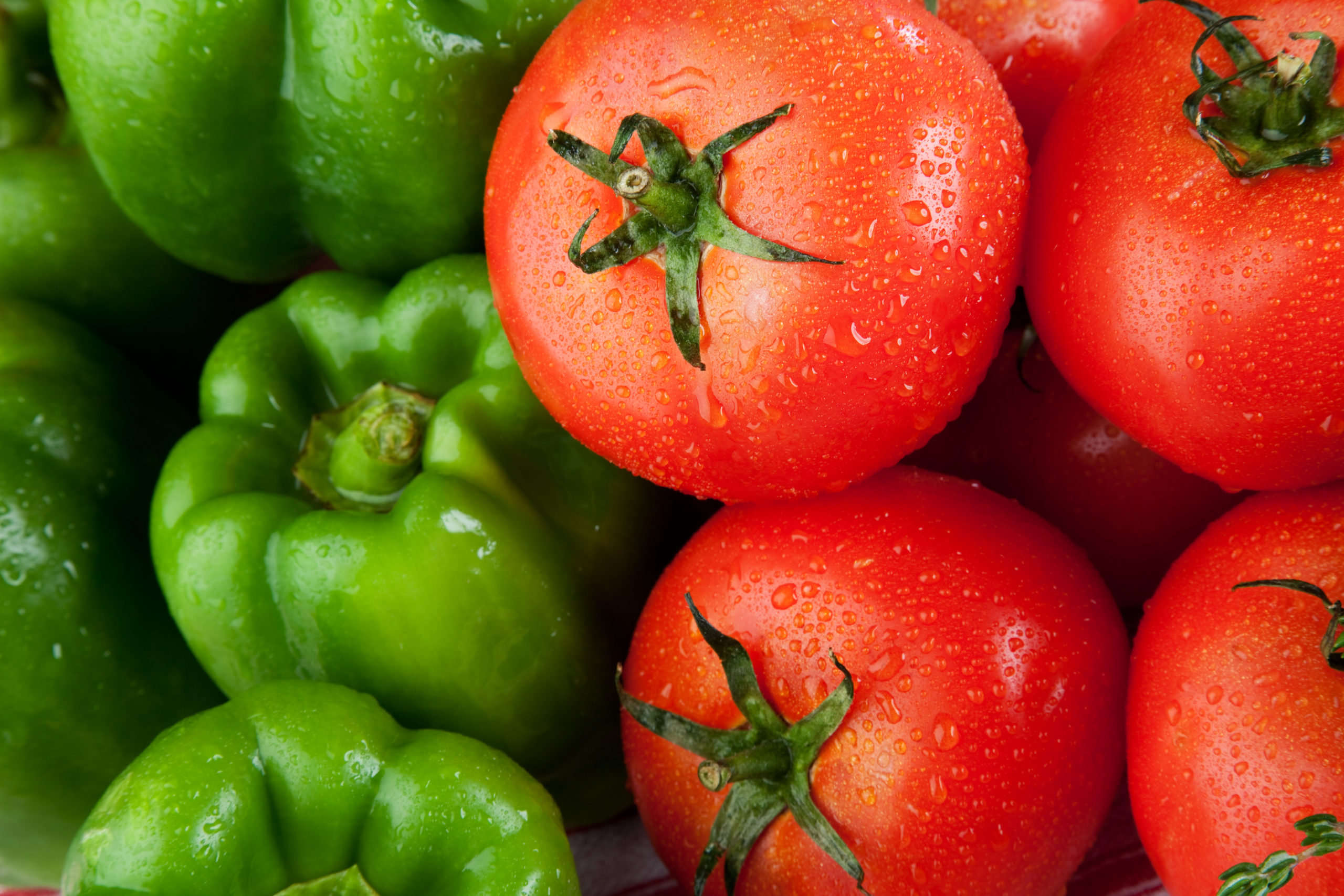You’ve ditched dairy, gone without gluten, said goodbye to soy and other Hi-FI ingredients—but you’re still experiencing symptoms. What gives?
While you may be eating all the healthy foods in the world, not every food may be healthy for you. If you’re dealing with inflammation and haven’t been able to pinpoint the source, nightshade vegetables just might be the culprit.
What are nightshades?
Nightshades are a category of plants that belong to the Solanaceae family, which applies to over 2,000 different plants. Only a handful are used as food, and most of the edible ones are considered healthy and highly nutritious for the majority of people.
Nightshades include:
- Peppers*
- Tomatoes and tomatillos
- Potatoes
- Eggplant
- Goji berries
- Ashwagandha (an adaptogenic herb typically used for adrenal support)
- Tobacco (I know you’re not consuming this one!)
*Peppers include spices like cayenne, paprika, and chili powder (and spice blends that contain them, like curry powder). Black pepper, on the other hand, is not part of the nightshade family; it is actually a peppercorn, which is a fruit!
Nightshades are high in lectins, a type of protein that can be hard to digest. Because they can bind to cells in your gut, lectins are considered anti-nutrients. Research shows that for people who lack the enzymes to break down lectins, nightshades may contribute to nutrient deficiencies, disrupt digestion, and damage your intestinal lining.1
These problems can especially manifest in folks with autoimmune diseases.2
“Like gluten-containing grains, nightshades also harbor lectins or sugar-binding proteins, which can activate the immune system and increase inflammation and pain in the body,” says Vincent Pedre, MD, in Happy Gut.
According to Pedre, “some people with inflammatory conditions are particularly sensitive to even tiny amounts [of nightshades]. In these people, even cooking the nightshades, which will lower the [inflammatory] alkaloid content by 40% to 50%, will not be enough to save them from the damaging effects.”
Your vegan eggplant parmesan covered in homemade tomato sauce using vegetables from your backyard garden and sprinkled with dairy-free cheese made from potato starch? Seems pretty innocent!
But this category of foods also contains a natural chemical called solanine, an alkaloid that can cause inflammation in the body.
“In theory, if solanine is not destroyed in the intestine, it could be toxic,” says Jonny Bowden, PhD, in The 150 Healthiest Foods on Earth. “This is generally not an issue, but one [expert] has hypothesized that some people with osteoarthritis may not be able to destroy solanine in the gut, leading to solanine absorption and aggravating osteoarthritis.”
In other words, your garden-to-table meal may not be as nourishing to your body as it might be to the rest of your family. But before throwing out the baby with the bathwater, let’s make sure nightshades are actually the root cause of your inflammation.
What are the symptoms of nightshade intolerance?
Nightshades can show up as an allergy or intolerance. Someone with a nightshade allergy may develop breathing problems or a rash soon after eating certain vegetables. An intolerance or sensitivity is less severe and is the result of missing enzymes needed to properly digest these foods. Since the foods aren’t digested properly, they cause a range of digestive issues.
For those who cannot effectively digest and metabolize them, nightshades can lead to and exacerbate inflammation. That’s why anti-inflammatory diet protocols like the Autoimmune Paleo Diet (AIP) remove nightshades.
“Uncontrolled inflammation is a smoldering fire that can lead to insulin resistance, which sets the stage for many chronic diseases,” says Mark Hyman in his book, What the Heck Should I Eat?.
On top of inflammation, symptoms of nightshade sensitivity can include3:
- Diarrhea
- Leaky gut and malabsorption
- Vomiting
- Abdominal pain
- Headaches
- Increased joint pain or arthritis symptoms
- Skin rashes
- Heartburn
- Increased symptoms of IBS and other bowel disorders
While allergic reactions are immediate, intolerance is a bit sneakier. These symptoms can occur up to three days after consumption, so it can be difficult to tell if they’re connected. I recommend tracking your symptoms along with your food intake to see if you can find any patterns.
The best way to test for a nightshade sensitivity is to follow the same protocol as The Virgin Diet. Eliminate Hi-FI foods for at least three weeks, and then slowly reintroduce them while tracking your symptoms to see if there are any changes.
During the reintroduction phase, rather than feasting on a nightshade-packed ratatouille, try one type of vegetable at a time. You may find you’re only sensitive to tomatoes, while you can eat all the peppers you want.
The best healthy swaps for nightshades
The healthy swaps you make for nightshades may depend on the recipe you’re making. I’ve listed potential substitutions below for each vegetable so you can choose what makes the most sense when modifying your meal:
- Bell peppers: cucumbers, radishes, zucchini
- Cayenne/paprika/chili powder, etc: black or white pepper, cumin, turmeric
- Tomatoes: beets, carrots, apples, grapes, strawberries
- Tomato sauce: Pesto, olive oil and garlic, tomato-less marinara
- Potatoes: parsnips, sweet potatoes (botanically different from white potatoes), carrots, cauliflower, squash
- Eggplant: portobello mushrooms, zucchini
- Goji berries: cranberries, blueberries
- Ashwagandha: rhodiola, maca
Nightshade-free recipes to try
It doesn’t have to be hard to take nightshades out of your diet. I’ve rounded up some of my favorite recipes for you to add to your meal plan to make the elimination phase much easier (and tastier, too):
- Cauliflower Rice with Lentils and Pomegranate
- Lentil Nut Burgers with Cilantro Vinaigrette
- Vietnamese Chicken and Cabbage Salad
- Virgin Stuffed Mushrooms (omit red pepper flakes)
- Bacon and Mushroom Sweet Potato Hash
Take-home: While nightshades aren’t generally a problem for most people, if you’re experiencing digestive issues including gas and bloating, heartburn, nausea, or diarrhea, you'll want to explore a possible intolerance. The same goes for autoimmune disease, since nightshades can increase inflammation for these folks.
As you’re swapping out nightshades and then challenging them, you may find that you can tolerate some but not others. Or, you might find that you need to permanently banish nightshades from your diet. That’s why keeping a food journal is so important to find out what works for you (and what doesn’t).
“Where do I start?” That’s a question I get all the time. That’s why I created my Ultimate Health Roadmap, to help you break down your journey into small, manageable steps guaranteed to keep you moving in the right direction. Download it for FREE here.
References:
- Vojdani A. Lectins, agglutinins, and their roles in autoimmune reactivities. Altern Ther Health Med. 2015;21 Suppl 1:46-51. PMID: 25599185.
- Freed DL. Do dietary lectins cause disease? BMJ. 1999 Apr 17;318(7190):1023-4. doi: 10.1136/bmj.318.7190.1023. PMID: 10205084; PMCID: PMC1115436.
- https://www.medicalnewstoday.com/articles/321883#what-is-a-nightshade-allergy






